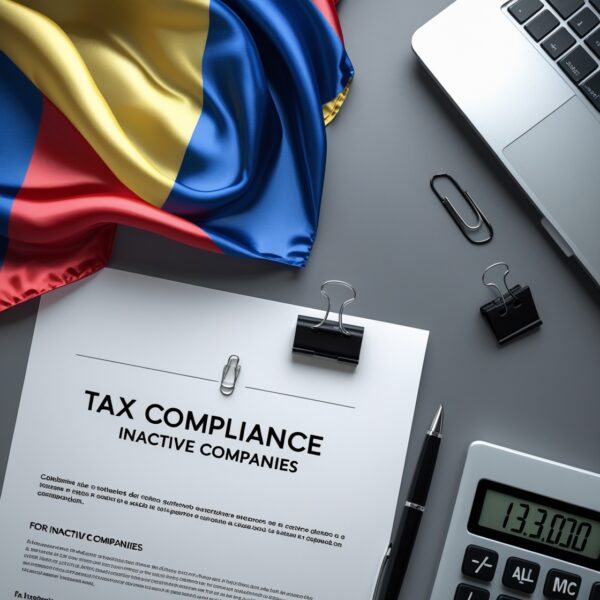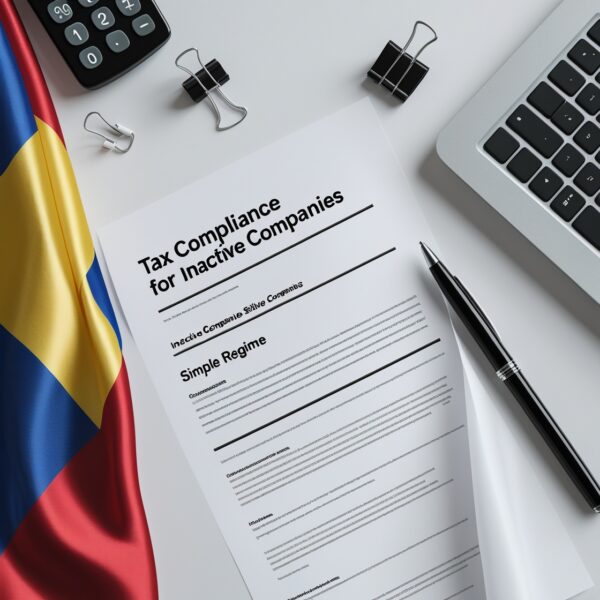What is Value-Added Tax (VAT)? A Guide for Businesses in Colombia
Managing taxes properly is one of the biggest challenges for businesses operating in Colombia. Among the different types of taxes, Value-Added Tax (VAT) —known locally as Impuesto al Valor Agregado (IVA)—plays a central role. It applies to most sales of goods and services and affects nearly every transaction carried out by companies.
Understanding how VAT works, who is required to charge and report it, and how to calculate and manage it effectively is key to staying compliant and avoiding costly penalties. Whether you’re a small entrepreneur or a large corporation, this guide will give you a clear overview of how VAT functions in Colombia, including applicable rates, exemptions, filing requirements, and best practices for proper tax handling.
Let’s explore what VAT is and how it impacts your business operations in Colombia.

1. What is Value-Added Tax (VAT)?
VAT (Impuesto al Valor Agregado, IVA) is an indirect consumption tax levied on the sale of tangible goods, the provision of services, and the importation of goods in Colombia. It is one of the country’s most important sources of tax revenue and a fundamental pillar of public finance.
Unlike direct taxes such as income tax, VAT is passed on to the final consumer. The seller charges the tax at the point of sale and subsequently reports and pays it to the DIAN (National Tax and Customs Directorate).
2. VAT Rates in Colombia
In Colombia, there are no regional or local VAT rates—it is a national-level tax. The main categories include:
- Standard rate: 19%
- Reduced rate: 5% (applies to specific goods and services such as certain foods, bicycles, and some home appliances)
- Zero rate (0%): applies to exempt goods such as exports and some basic food items
There are also excluded goods and services, which are not subject to VAT and do not allow VAT crediting, unlike exempt goods which do allow VAT paid on inputs to be credited.
3. VAT Exemptions and Reduced Rates
Colombia’s Tax Code establishes exempt, excluded, and reduced-rate categories:
- Exempt (0% rate):
- Exported goods
- Certain agricultural products (milk, eggs, fruits)
- Educational services
- Public healthcare services
- Excluded (not subject to VAT and do not allow VAT deductions):
- Residential property rentals
- Funeral services
- Urban public transport
- Reduced rate (5%):
- Roasted coffee
- Natural gas
- Low-cost bicycles
- Solar panels
Note: The classification of goods/services may change, and businesses must stay updated with regulations to ensure proper tax treatment.
4. Who Must Collect and Pay VAT?
In Colombia, VAT must be collected by those classified as VAT liable parties according to criteria established by DIAN:
- VAT-registered individuals or entities are required to charge, report, and pay VAT periodically.
- Businesses or individuals that exceed certain thresholds (e.g., annual revenue, number of employees, having a physical location open to the public) must register as VAT-liable.
Common triggers for VAT liability:
- Annual gross revenue exceeding 3,500 UVT (approx. COP 170 million in 2025)
- Regularly engaging in taxable economic activity
- Importing or providing VAT-taxable services
5. VAT vs. Other Indirect Taxes in Colombia
| Tax | Point of Application | Party Responsible | Level |
|---|---|---|---|
| VAT (IVA) | Sales and services | Seller | National |
| National Consumption Tax | Prepared meals, drinks, phones, luxury vehicles | Service provider | National |
| Stamp Duty | Legal/public/private documents | Issuer | National |
| Local taxes (ICA, etc.) | Business activity, signage | Business owner or merchant | Local/municipal |
6. Practical VAT Calculation
To calculate VAT, multiply the base value by the applicable rate (19%, 5%, or 0%).
Example:
- Base price of a product: COP 1,000,000
- Rate: 19%
- VAT = 1,000,000 × 0.19 = COP 190,000
- Total amount charged to customer: COP 1,190,000
7. VAT Collection and Reporting Process
1. Register with DIAN
Businesses required to collect VAT must register with the RUT (Single Tax Registry) and declare themselves as VAT liable.
2. Issue electronic invoices
Invoices must comply with formal requirements and clearly indicate the VAT charged.
3. Submit tax returns
Frequency depends on business size and sector:
• Bimonthly: for businesses with revenue above 92,000 UVT
• Every four months: for some mid-sized taxpayers
• Annually: for small businesses meeting specific criteria
4. Make VAT payments
Tax must be paid within deadlines set in the annual DIAN tax calendar.
5. Keep records
Keep all invoices, exemption certificates, supporting documents, and returns for at least 5 years.
8. Best Practices for VAT Management
• Use up-to-date accounting software that automates VAT calculation and categorization.
• Train administrative and accounting teams in e-invoicing and VAT compliance.
• Regularly monitor product and service categories for any changes in VAT treatment.
• Review purchases and expenses to ensure correct deduction of input VAT.
• Work with tax advisors to prevent errors and optimize compliance.
9. Impact and Final Thoughts
VAT is a critical tax for businesses of all sizes in Colombia. Proper management ensures compliance, minimizes legal and financial risk, and supports efficient operations.
Due to the system’s complexity—various rates, exemptions, and documentation requirements—companies are encouraged to implement strong internal controls and seek professional support when needed.
Frequently Asked Questions (FAQs)
Our latest and greatest
-
Colombian annual Inactive Company Tax Filing Ordinary Regime
$552.00 -
Colombian annual Inactive Company Tax Filing Simple Regime
$307.30 -
Colombian Annual Tax Filing Package
$242.00 -
Colombian Business Incorporation – Starting at $750 usd
$778.00 – $1,265.00 -
Colombian Individual Annual Tax Filing – Starting at $300 usd





